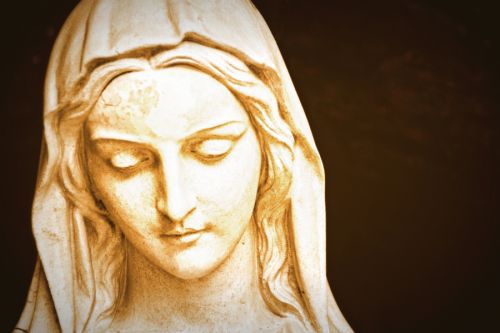Our Lady. Blessed Mother. Virgin Mary. Queen of Peace. Theotokos. Handmaid of the Lord. Mother Mary. These are just some of the titles used to describe the young woman to whom an angel appeared some 2,000 years ago with the message that she would conceive and bear the Savior of the World. Mary has very few recorded words in the New Testament, but her worldwide devotion spans across time, cultures and even religions. In a Nov. 8 feature for National Geographic, “How the Virgin Mary Became the World’s Most Powerful Woman,” Maureen Orth explores the worldwide phenomenon of devotion to the Mother of God in anticipation of the Dec. 13 National Geographic Channel special, “The Cult of Mary.” In her piece, Orth spoke with Marian scholars and experts and even followed pilgrims to Marian apparition sites to learn more about this “most powerful woman.” “We see the relationship of Mary with us isn’t just any relationship — it’s sacred,” María Enriqueta García, who did her sacred theology dissertation at the International Marian Research Institute at the University of Dayton, told Orth. The idea of Mary as an intercessor before God comes from scripture at the Wedding Feast of Cana, when Jesus performs his first miracle after his mother’s prompting of, “They have no wine” followed by her instruction to the servers to, “Do whatever he tells you.” “Since then no other woman has been as exalted as Mary,” Orth said. “As a universal symbol of maternal love, as well as of suffering and sacrifice, Mary is often the touchstone of our longing for meaning, a more accessible link to the supernatural than formal church teachings. Her mantle offers both security and protection.” For her story, Orth accompanied pilgrims around the world to Marian apparition sites including Lourdes, Kibeho, Mexico City, and even Medjugorje — where apparitions are said to still be occurring and the Vatican has not yet ruled on its authenticity. In Kibeho, Rwanda she met with Anathalie Mukamazimpaka, one of the young women to whom the Virgin Mary appeared from 1981 to 1983 with the message of repentance and foretold the events of the 1994 Rwandan Genocide. “The first time she appeared,” Anathalie said, “I was reciting the rosary, and she called me by my name … She never told me why she chose me. She said she appears to anyone she wants, anytime she wants, anywhere she wants,” Anathalie said. “She only asks us to love her as much as she loves us.” Mary even helped give a nation their identity, Orth said, in the case of Our Lady of Guadalupe with Mexico. “Anyone witnessing the outpouring of love and devotion that pilgrims demonstrate for their beloved Madre on the days leading up to the Feast of Our Lady of Guadalupe … can see that the Virgin Mary is deeply embedded in Mexican hearts and souls,” Orth said as she followed pilgrims to Mexico City where St. Juan Diego’s tilma bearing the miraculous image of Our Lady of Guadalupe is still intact and on display. In addition to Christians, Muslims hold the Blessed Mother in high regard, Orth said, noting that her name appears more in the Koran than in the New Testament. “So the Virgin Mary is not at all strange to Muslims,” Fr. Johann Roten, director of research and special projects at the University of Dayton’s Marian Library, said. “In fact, wherever there is a connection between Christians and Muslims — or any two groups that know and love her — there is a common value in the covenant mother.” In Egypt, Orth spoke with Muslims who were drawn to churches because of their devotion to Mary. “Her story tells us a lot of things,” a young Muslim woman praying outside the Abu Serga church on Easter said. “She is able to face lots of hardships in her life because of her faith, her belief in God.”

